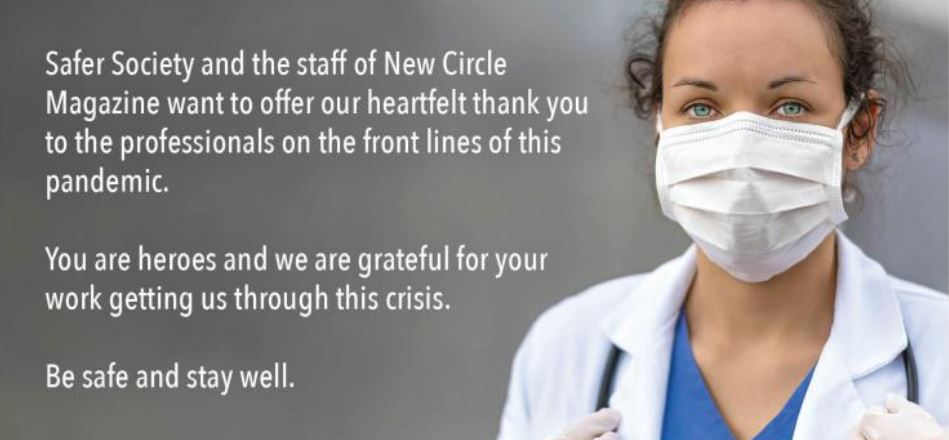Foreword
As we publish this first issue of The New Circle, the COVID-19 virus has disrupted all of our lives, some far more than others, and for some with tragic consequences. When it has finally subsided, this pandemic will have changed our lives for many years to come. This first issue and the articles within it were prepared far ahead of the coronavirus’ spread across the world, and, with the exception of this foreword, we present Issue 1 in its original form, with no reference to the pandemic. However, the virus and its spread is on our minds and in our hearts. As we exercise precautions that will help prevent further contagion and keep us as safe as possible, we are also saddened by its already devastating effects across all domains of life and society. Nonetheless, we are comforted by the belief and expectation that the virus will be contained sooner rather than later, and we hope it will better prepare us, across the world, and within the United States, for the future. At the same time, we are reminded of the special risks posed by the pandemic to children—especially those children who are already at risk.
Increased At-Risk Conditions
As reported in the media, abuse and neglect hotlines across the country report declines in the numbers of reports, suggesting not that incidents of abuse and neglect have declined, but that they are not being reported, due to the absence of children and adolescents in schools and other public and community settings where, in normal times, they are seen by those who recognize the signs of abuse and neglect. The stressful conditions created by precautionary measures— in which homebound children and their families remain in close contact around the clock, with reduced outside contact—create further risk, and especially for those children already at risk for abuse or neglect in their homes. This may include physical or sexual abuse, exposure to domestic violence, and parental substance abuse or mental health issues. Children already at risk also face broader risks posed by family financial instability, including perhaps housing instability, resulting from the shuttering of society as we combat the pandemic, as well as a shortage of nutritious food, because some children receive their best nutrition through daycare centers or school breakfast and lunch programs. Additionally, we must be mindful that already existing mental, physical, or behavioral health issues may be further exacerbated by a lack of social and physical outlets outside of the home, as well as a lack of routine medical and dental care and possibly emergency or urgent care.
Child abuse and neglect are common. The Centers for Disease Control and Prevention report that at least 1 in 7 children have experienced child abuse and/or neglect in the past year1. Adding to the list of adverse childhood experiences developed by the CDC (ACEs, described in this issue of The New Circle), we must now sadly also add the direct and indirect effects of community-wide, and in this case, worldwide, epidemics that not only interfere with the normal child abuse reporting process, but also create the conditions for increased risk for children and adolescents already at risk.
Sadly, the impact of the COVID-19 pandemic renders The New Circle: Working With At-Risk Children and Teens even more relevant in these troubled times.

- Centers for Disease Control and Prevention. Preventing child abuse & neglect. (2019). https://www.cdc.gov/violenceprevention/pdf/CAN-factsheet.pdf
